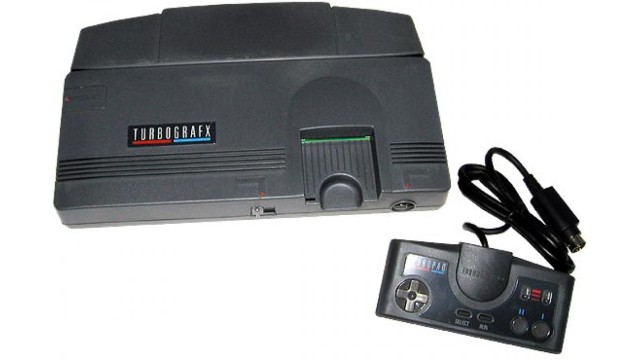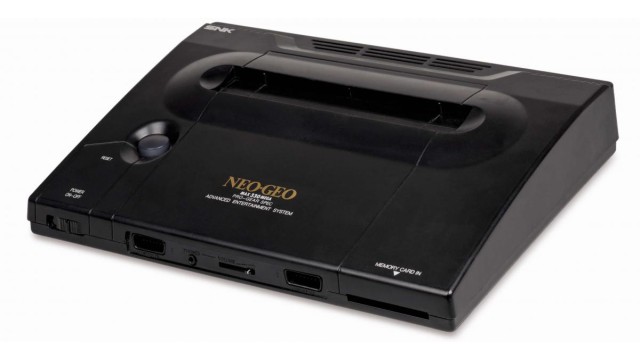
Atari 7800
Launches: 1987
Discontinued: 1992
Life span: 5 years
Units sold: 4 300 000
Generation: 3rd
Country releases of Atari 7800
 USA: USA: | Jan/1986 | 140 | $ |
 Japan: Japan: | 23/Jun/1986 |
 Atari 7800 technical specifications
Atari 7800 technical specifications
CPU: Atari SALLY 6502
Memory: 4 KB
 Atari 7800 video specifications
Atari 7800 video specifications
Atari 7800 graphics capabilities.
Video chip: MARIA
Video connection:
Atari 7800 video modes
| 320×288 | 25 colors using a 255 colors palette | PAL |
| 160×288 | 26 colors using a 255 colors palette | PAL |
| 320×240 | 25 colors using a 255 colors palette | NTSC |
| 160×240 | 25 colors using a 255 colors palette | NTSC |
 Atari 7800 audio specifications
Atari 7800 audio specifications
Atari 7800 sound capabilities.
Audio chip: STELLA
Audio mode: Mono
 Controllers of Atari 7800
Controllers of Atari 7800
 Atari 7800 games support
Atari 7800 games support
Support:
Atari 7800 games
Games library:
Atari 7800 story
The Atari 7800 was Atari’s attempt to reclaim its position as a leader in the home video game market during the mid-1980s. The creation, development, launch, and market reception of the Atari 7800 are all deeply intertwined with the turbulent history of Atari as a company during this period, marked by strategic shifts, corporate changes, and an increasingly competitive gaming landscape.
The creation of the Atari 7800 began in the early 1980s as Atari faced growing competition in the home console market. After the commercial failure of the Atari 5200, which had been criticized for its lack of backward compatibility with the popular Atari 2600 and for its unreliable controllers, Atari recognized the need to develop a new console that could address these issues while also offering enhanced gaming capabilities. The company sought to create a system that would appeal to both existing Atari 2600 owners and new customers, with the goal of reestablishing its dominance in the video game industry.
Atari commissioned an external company, General Computer Corporation (GCC), to develop the Atari 7800. GCC had previously worked with Atari on various projects and had a reputation for technical expertise. The design brief for the Atari 7800 was ambitious: the new console needed to be fully backward compatible with the Atari 2600, ensuring that it could play the extensive library of 2600 games, while also offering improved graphics, sound, and overall performance to compete with newer systems like the Nintendo Entertainment System (NES) and the Sega Master System.
The development of the Atari 7800 focused on creating a system that was both powerful and affordable. The console was built around a custom graphics chip, the Maria chip, which was designed to offer significantly better graphical capabilities than the Atari 2600. The Maria chip allowed the 7800 to display more colors, more sprites on screen at once, and smoother animation, making it competitive with the latest consoles in terms of visual performance. Additionally, the system used a 6502 processor, similar to the one found in the 2600, but with enhanced capabilities. This choice of hardware enabled the Atari 7800 to deliver a more modern gaming experience while maintaining compatibility with older 2600 games.
One of the most significant aspects of the Atari 7800’s development was its approach to backward compatibility. Atari recognized that one of the key selling points of the new console would be its ability to play the extensive library of Atari 2600 games. To achieve this, the 7800 was designed with a 2600 compatibility mode, allowing it to switch seamlessly between 7800 and 2600 game cartridges. This feature was a direct response to the criticism leveled at the Atari 5200, which could not play 2600 games without a separate adapter. By making the 7800 fully backward compatible, Atari hoped to attract both new customers and existing 2600 owners who were looking to upgrade to a more advanced system without losing access to their existing game collections.
Despite the advanced features and thoughtful design of the Atari 7800, its launch was delayed due to internal issues at Atari. The console was originally completed in 1983 and was intended to be released shortly thereafter. However, during this time, Atari was experiencing significant upheaval. The video game crash of 1983 had severely impacted the industry, leading to declining sales and financial instability for many companies, including Atari. In 1984, Atari's consumer division was sold by Warner Communications to Jack Tramiel, the founder of Commodore International, who was more interested in focusing on personal computers than on the video game market. As a result, the release of the Atari 7800 was put on hold, and it would not be launched until 1986, three years after its initial development was completed.
When the Atari 7800 finally launched in 1986, it faced a very different market than the one it had been designed for. By this time, the NES had been released in North America and was rapidly gaining popularity, establishing itself as the dominant home console with a strong library of games and support from third-party developers. The delay in the Atari 7800’s launch meant that it was now competing against a well-established and popular competitor, rather than entering a relatively open market as originally intended. Atari attempted to position the 7800 as a budget-friendly alternative to the NES, highlighting its backward compatibility with the Atari 2600 and its lower price point as key selling points.
The market reception of the Atari 7800 was mixed. On one hand, the console was praised for its backward compatibility, which allowed users to access the extensive library of Atari 2600 games. This feature made the 7800 an attractive option for existing Atari customers who had invested in the 2600 and its game library. Additionally, the 7800’s improved graphics and sound capabilities were well-received, and the system was recognized as a technically competent console that could compete with the NES in terms of performance.
However, the Atari 7800 struggled to gain significant market share for several reasons. One major issue was the lack of strong third-party support. By the time the 7800 was launched, many third-party developers had already shifted their focus to the NES, attracted by Nintendo's successful licensing and marketing strategies. As a result, the 7800’s game library was limited compared to the vast and growing selection of titles available on the NES. While the 7800 did offer some popular arcade ports, such as Ms. Pac-Man and Asteroids, it lacked the breadth and depth of content that was available on Nintendo’s system.
Another factor that hindered the Atari 7800’s success was the lingering impact of the video game crash of 1983. Consumer confidence in video game consoles had been shaken by the crash, and many retailers were hesitant to fully support new systems. Atari's tarnished reputation from the 5200’s failure and the company's shift in focus towards personal computers under Jack Tramiel’s leadership also contributed to a lack of momentum for the 7800 in the market. The console did not receive the aggressive marketing push that it needed to compete effectively against the NES, and as a result, it struggled to build a strong presence in the marketplace.
The Atari 7800 managed to carve out a niche for itself among a segment of gamers, particularly those who were loyal to the Atari brand and appreciated the backward compatibility with 2600 games. However, it was unable to match the commercial success of the NES, which continued to dominate the market throughout the late 1980s. Atari eventually shifted its focus away from the home console market, as the 7800's modest sales and the company's ongoing financial difficulties led to the decision to discontinue the console in the early 1990s.
In retrospect, the Atari 7800 represents a case of missed opportunities and poor timing. The console had the potential to be a strong competitor in the video game market, thanks to its technical capabilities and backward compatibility with the Atari 2600. However, delays in its launch, combined with a rapidly changing market and a lack of strong third-party support, meant that the 7800 was unable to achieve the level of success that Atari had hoped for. The console’s legacy is one of a promising system that was ultimately overshadowed by the competition and the broader challenges facing Atari as a company during this turbulent period in the history of video gaming.
Previous Atari console: Atari 5200
Next Atari console: Atari Jaguar



